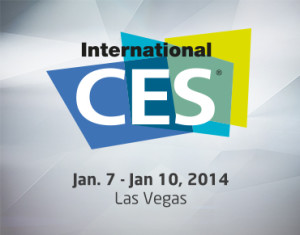 The rise of digital health at the 2014 Consumer Electronics Show signals the hockey-stick growth of consumer-facing health devices for fitness and, increasingly, more medical applications in the hands of people, patients, and caregivers. This year at #CES2014, while the 40% growth of the CES digital health footprint will get the headlines, the underlying story will go beyond wristbands and step-tracking generating data from an N of 1 to tools that generate data to bolster shared-decision making between people and the health system, and eventually support population health.
The rise of digital health at the 2014 Consumer Electronics Show signals the hockey-stick growth of consumer-facing health devices for fitness and, increasingly, more medical applications in the hands of people, patients, and caregivers. This year at #CES2014, while the 40% growth of the CES digital health footprint will get the headlines, the underlying story will go beyond wristbands and step-tracking generating data from an N of 1 to tools that generate data to bolster shared-decision making between people and the health system, and eventually support population health.
For example:
– Aetna is partnering with J&J to deploy their Care4Today mobile health app with the goal of driving medication adherence. This is a major population health challenge worth $105 billion and thousands of lives saved every year.
– UnitedHealthcare, a large exhibitor in the 2013 CES digital health show, will once again show at #CES2014 featuring its involvement with Comcast in ProjectNotMe, a diabetes prevention program.
– Fitbit, the popular accelerometer that was heavily promoted for 2013 holiday gift-giving and will exhibit at #CES2014, was featured in a peer-reviewed clinical study published in the Annals of Thoracic Surgery in August 2013. The device was shown to be effective in speeding post-surgical outcomes for heart surgery patients.
– Lisa Maki, founder of PokitDok, the online marketplace for consumers seeking health services at a pre-agreed price, will be featured on a panel with UnitedHealthcare and Humetrix, a connected health company, on how digital health tools can help consumers deal in the post-Affordable Care Act world.
While the CES segments health tools in 3 buckets: Digital Health, Silvers Summit (for healthy, safe aging) and Fitness Tech – these areas will blur in the context of peoples’ whole-health and value-based payment’s incentives to drive population health and lower costs.
Health Populi’s Hot Points: In 2014, hospitals are looking to stem readmissions for acute myocardial infarction, congestive heart failure, and pneumonia. Health plans seek greater patient engagement strategies that nudge people toward optimal utilization of health system resources (less emergency department, more self-care and retail clinics, for example). Patients themselves, stretching new muscles getting to know high-deductible health plans and health savings accounts, seek greater transparency and convenient access to health care – increasingly outside of the traditional brick-and-mortar physician office and hospital on Pill Hill where parking is expensive, walks to the front door are long, and institutionally-borne infections all-too-common.
As mobile platforms permeate peoples’ every day lives, and people assume a greater role in their health decisions (both financial and clinical), the “m” in “mobile health” will start to fade into the larger paradigm of self-care and shared-connected care in the larger health ecosystem.
Watch for daily Health Populi updates live from the CES next week.




 Thanks to Feedspot for naming this blog, Health Populi, as a
Thanks to Feedspot for naming this blog, Health Populi, as a